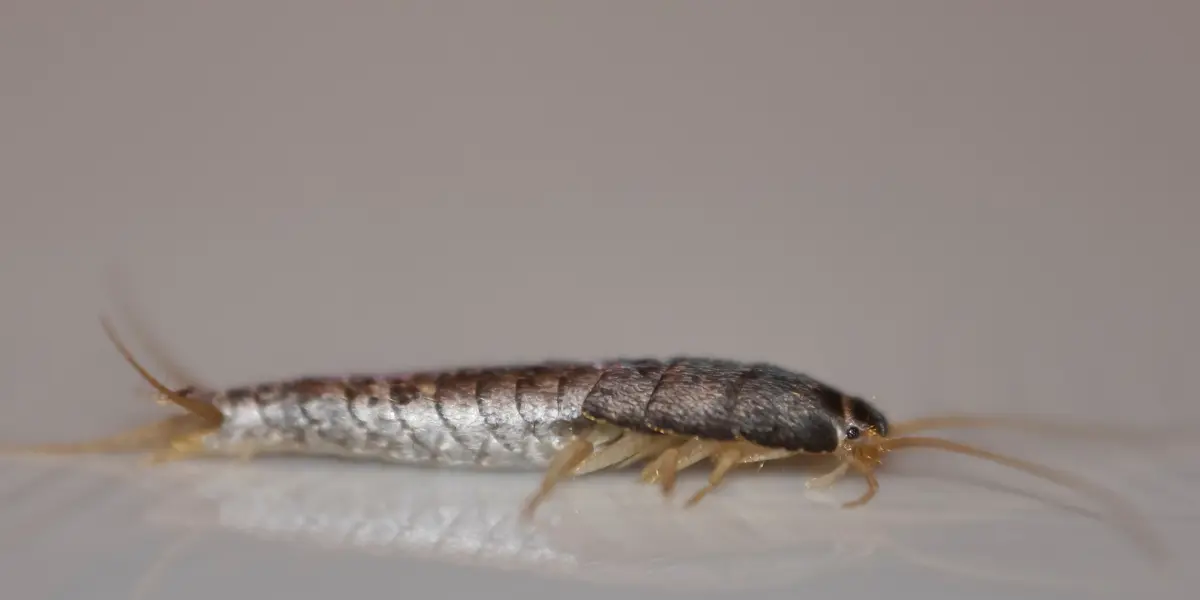If you have ever noticed what attracts silverfish into your house, the answer is: it is a combination of humidity, food, and shelter. The fact that they are small, silvery insects does not mean that they have randomly landed in your house; they have been attracted by the environment that suits their survival requirements. The first thing to do is to understand those attractants.
Why Silverfish Invade: The Key Drivers
Silverfish are water-loving, starch-eating scavengers. They do not harm anyone but may damage books, wallpaper, clothes, and pantry items when uncontrolled. To avoid that, you must know what attracts them.
Moisture and High Humidity
Dampness is one of the greatest temptations. These insects thrive when indoor humidity exceeds roughly 70%, making damp rooms their preferred habitat. They usually like the humid conditions found in the bathrooms, basements, laundry rooms, and crawl spaces.
They are not suited to a dry environment. When your house has rotten water mains, stuffy air, or mouldy condensation, you are practically putting up a welcome sign to them.
Darkness, Warmth, and Shelter
Silverfish like to remain in dark, undisturbed areas during the day. They prefer places where the temperatures are constant, usually 21-30 °C (70-90°F). These are wall empty areas, back of baseboards, under furniture, inside storage containers, or under folds of wallpaper.
They are also nocturnal and prefer the darkness and emerge in the night to forage. They also get attracted to the dirty or isolated places where they can remain concealed and secure.
Food Sources: Starches, Sugar, and Cellulose
Their diet is also another big pull. Silverfish feed on carbohydrate and protein-rich materials. They include books, wallpaper paste, cardboard, cereal, flour, starches, garments with starch residues, and cotton, linen, or silk fabrics.
They can be attracted by even the smallest amount of sugar or starch that is left on the shelves in the pantry or on packaging. Such resources are readily available as sources of food that enable them to flourish in an indoor environment.
Cellulose-rich Materials
Since silverfish can digest cellulose, a natural component of paper and fabrics, they’re drawn to materials like books, old documents, cardboard, and natural fabrics. They’re especially attracted to adhesives and glues used in wallpaper or bookbinding.
Entry Points and External Conditions
Silverfish often enter through cracks, gaps, or holes in your foundation, doors, or window frames. They can also hitch a ride indoors through old books, cardboard boxes, or infested paper materials.
Outside your home, damp leaf piles, mulch, weeds touching the foundation, or lumber stored against the wall can create favorable conditions and invite silverfish closer.
How to Use This Knowledge to Prevent Silverfish
Knowing what attracts silverfish gives you a roadmap for prevention. You can disrupt their preferred conditions and make your home less inviting.
- Start by controlling moisture. Fix any leaks, run exhaust fans in bathrooms and kitchens, and use dehumidifiers in damp rooms. Try to keep humidity below 50–60 percent if possible.
- Declutter and minimize hiding places. Store paper, cardboard, and books in sealed containers or plastic bins rather than loose stacks. Pull furniture away from the walls so air circulates.
- Seal off gaps and cracks. Use caulk around baseboards, door frames, and plumbing areas. Repair or replace worn weather stripping or screens.
- Eliminate tempting food sources. Keep dry goods in airtight containers. Avoid leaving starch residues in your kitchen or pantry. Clean up crumbs or spills promptly.
You can also use traps or natural deterrents like cedar, peppermint, or lavender oil, but these work best when combined with regular cleaning and moisture control. If you already have a serious infestation, professional service from ASM Pest Exterminator may be necessary since silverfish reproduce slowly but hide deeply in cracks and crevices.
FAQs About Silverfish Attraction
1. Can silverfish live without food for long periods?
Yes. Silverfish can survive for several months without food, as long as they have moisture. Reducing humidity is one of the most effective ways to discourage them.
2. Do silverfish spread disease or bite humans?
No. Silverfish don’t bite or sting and aren’t known to spread disease. Their main threat is the damage they cause to household materials.
3. Will using essential oils repel silverfish effectively?
They can help as deterrents. Oils like cedarwood, peppermint, lavender, or citrus may discourage silverfish from settling in treated areas, but they’re not a complete solution.
4. How low does humidity need to be to discourage silverfish?
Keeping indoor humidity below 50–60 percent makes your home much less attractive to them. They struggle to survive in dry conditions.
5. Can silverfish come in on boxes, books, or materials I bring into my home?
Yes. Items stored in damp or infested environments like old boxes, books, or paper goods, can carry silverfish or their eggs inside. Always inspect secondhand items before bringing them home.




